Introduction
During the war, Newfoundland and Labrador began to change in many ways — economically, politically, and socially. At the beginning of the war, St. John's was busy with war preparations as young men from all parts of the island and Labrador arrived for training and then left for overseas. Newfoundland and Labrador's economy boomed as the European demand for fish rose. Political parties laid aside differences and united in support of the war effort. Men were asked to enlist for only one year, in anticipation of a quick and decisive Allied victory.
As the war dragged on, its effects took an unexpected toll. The social life of the colony was severely affected. Young men were away for four years and approximately twenty percent never returned. At war's end, there were fewer jobs and many discharged soldiers looking for work. Others were seriously injured, requiring pensions and other supports. This, in turn, took a toll on the economy. The war debt was high and pensions placed a heavy burden on the treasury. The political parties that had put aside differences at the beginning of the war no longer agreed on a unified plan of action. These effects of the war influenced the colony for decades.
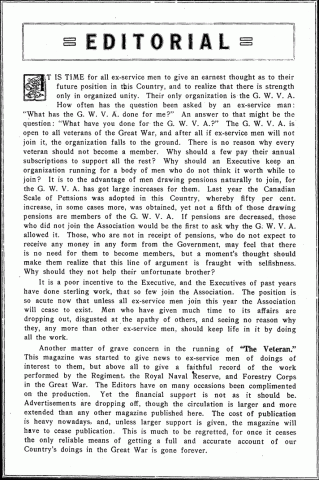
G.W.V.A: Great War Veterans Association
The Veteran, April 1922
The Rooms Provincial Archives
Social Effects
The Great War left its mark on all areas of the colony. Nearly 12000 men left to fight in the war between 1914 and 1918.
Newfoundlanders and Labradorians in the First World War

*These figures do not include 175 women from Newfoundland and Labrador who served overseas as nurses and ambulance drivers during the war.
It is difficult to measure (or imagine) the effects of having so many young men, both temporarily and permanently, removed from a society. Some children grew up fatherless. Many parents lost the support they normally would have received from their male children in later years. It also meant part of a generation of potential leaders was lost to Newfoundland and Labrador.
Request for Support
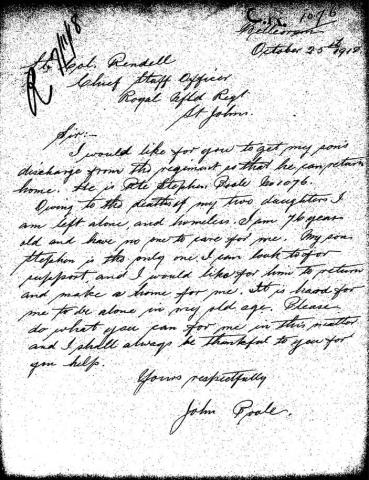
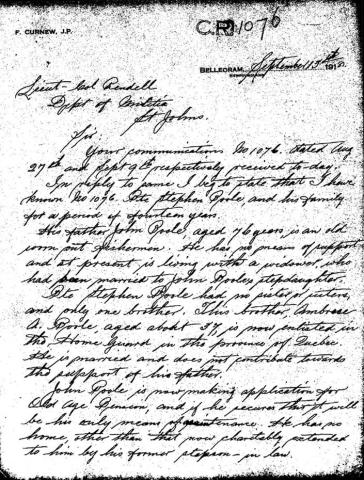
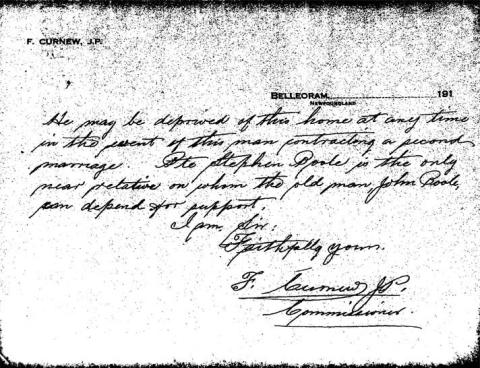
The Rooms Provincial Archives Regimental File #1076
Ayre Family
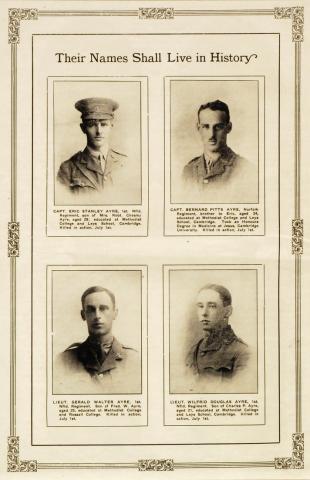
The Cadet (Catholic Cadet Corps: December 1916, p. 36)
The Rooms Provincial Archives
The challenge for the soldiers and seamen who did return from the war was to fit back into the lives they had left behind. Some were able to return to fishing or their old jobs. But many others — especially those who had left to fight in the war while still in school or who returned with disabilities — found themselves back home without a way to support themselves or their families.
War Pensions
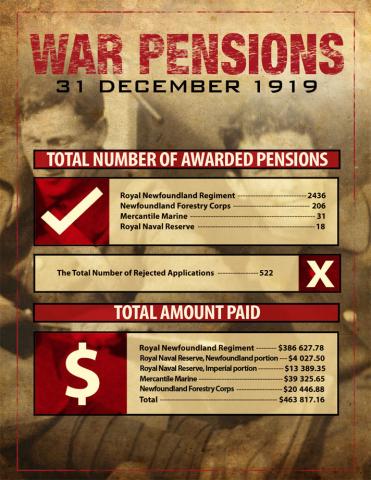
Background Image: The Rooms Provincial Archives VA 79-81.4
Many veterans also suffered psychological effects from the war, including shell shock. This impact is difficult to measure — especially as soldiers were often reluctant to talk of their war experiences. As military historian Richard Gabriel has noted: "Psychiatric breakdown remains one of the most costly items of war when expressed in human terms. In fact, in the First World War there was a greater probability of becoming a psychiatric casualty than of being killed by enemy fire."
To help returning servicemen re-adjust to their lives as civilians, the government created the Civil Re-Establishment Committee in June 1918. The committee had three goals: restore injured men to the best possible state of health; provide vocational training; and assist with job placement.
Medical
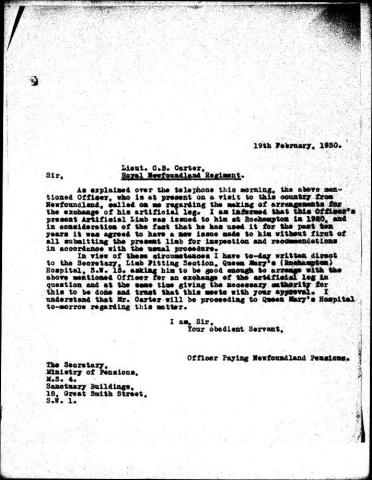
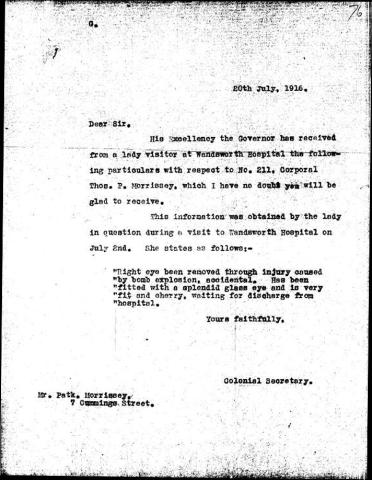
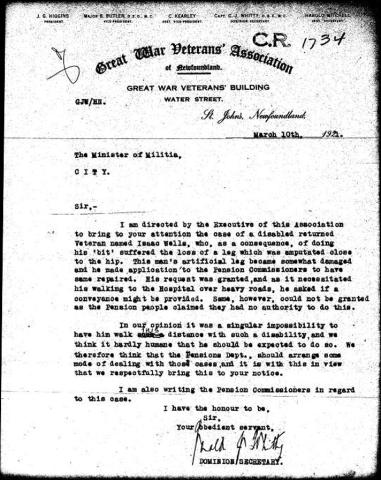
The Rooms Provincial Archives
One of the committee's first steps was to set up the "Re-Establishment School" for soldiers with little or no formal education. By 1920, almost 400 returning servicemen had enrolled in the school. In addition, the committee set up an Engineering School, a Nautical Academy, a Woodworking School, and a School of Telegraphy, which provided training for another 400 men. The committee also helped 80 men enroll in other courses or find apprenticeships. To ensure the men were able to take advantage of these programs, the committee paid a retraining allowance.
Invoice for Training
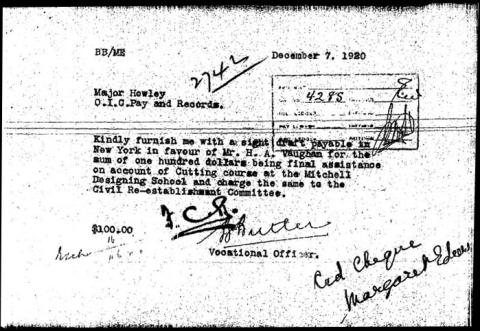
The Rooms Provincial Archives Regimental File #2742
Job placement was also an important part of the Civil Re-Establishment Committee's work. Before closing its doors in September 1920, the Committee placed over 1000 ex-servicemen in jobs. It also helped many of them to start their own businesses by loaning them money for equipment and supplies. In total, the Committee spent almost $ 329,000 administering its various programs.
An example of one such man was Joseph McKinley (Regt. # 748) of St. John's. This soldier went overseas in the fall of 1914 and was sent home in 1917 with severe back injuries. Unable to return to work as a Marine Engineer, he approached the Civil Re-Establishment Committee. They trained him in vulcanizing (curing rubber so that it is more durable) and lent him $500 to buy the necessary equipment and tools to set up a vulcanizing business.
Request for Funding
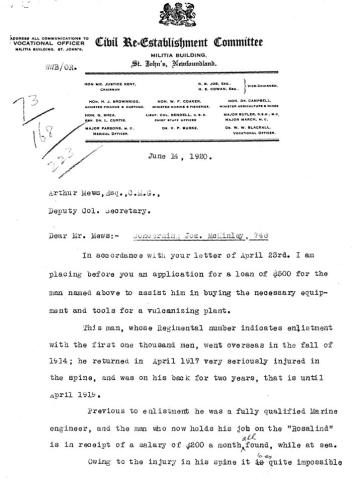
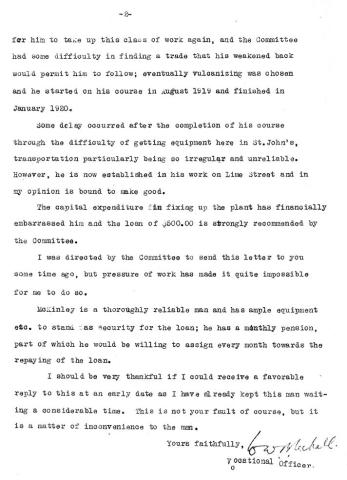
The Rooms Provincial Archives GN2.14.152
Despite the Civil Re-Establishment Committee's efforts, some servicemen still experienced challenges in returning to civilian life. A branch of the Great War Veterans' Association, established in St. John's in August 1918, helped to advocate for these men. This organization worked to increase veterans' pensions and to establish a national war memorial.
While the Association eventually succeeded in both these goals, there were still some veterans who struggled to find work. In 1921, one veteran presented a petition to the government seeking work for the unemployed in St. John's. The ex-soldier, who had only one arm, carried the Union Jack with him as he entered the House of Assembly. He explained that his other arm was in France.
House of Assembly
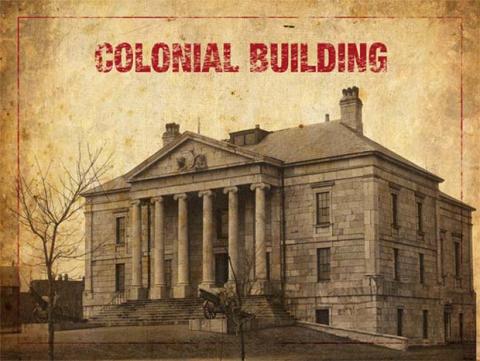
House of Assembly, Colonial Building, St. John's
Memorial University of Newfoundland Archives and Special Collections Division, Coll. 137, 2.04.001
Economic Effects
It was not long before Newfoundlanders and Labradorians began to feel the economic effects of the First World War. The war brought a high demand for steel ships and many St. John's merchants profited by selling their vessels. This directly impacted the shipping of supplies to Newfoundland and Labrador. Consequently, people experienced shortages of some supplies and higher prices for others.
Fortunately, as prices for supplies rose, so did the price of cod. The war had disrupted the European fishery, creating a high demand for Newfoundland and Labrador fish. By 1918, the colony's economy was "booming" — government revenue for the year ending June 1918 was $6.5 million. This left the government with a surplus of over $1.1 million, at that time the largest surplus in Newfoundland and Labrador's history.
Trade Statistics 1914-1918
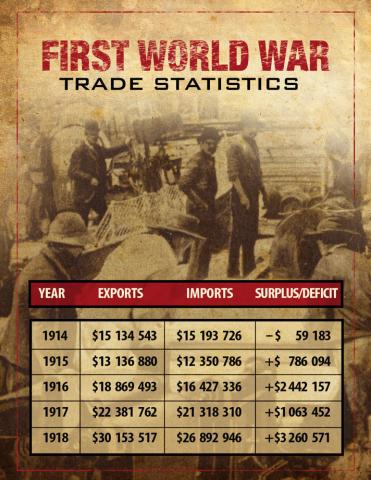
The Rooms Provincial Archives VA19-135
This wartime boom would not spare Newfoundland and Labrador from the economic challenges that lay ahead. When the colony entered the war, its public debt was $30.5 million. During the four years of war, the government borrowed an additional $15 million to pay for war costs, increasing the public debt to $43 million.
By 1918, almost a quarter of the colony's revenue was needed to pay the interest on its loans. In addition, government now faced the cost of paying pensions to returning servicemen.
This increasing public debt would have major effects on Newfoundland and Labrador both in the short and long term. To help cope with the debt, government introduced both business and personal taxes. At the time, the public thought that this personal income tax was a temporary measure!
Political Effects
Once the Newfoundland Government pledged its support to Great Britain at the outbreak of the war, other political parties also began to offer support. However, by July 1917, traditional party differences and other issues were making it more difficult for the government and the Newfoundland Patriotic Association to operate effectively. Prime Minister Morris responded to the situation by postponing the 1917 election and forming, from a coalition of all parties, a National Government. The Department of Militia was also created to assume the responsibilities of the Newfoundland Patriotic Association in managing the war effort.
This new government was soon put to the test. While the issue of whether or not to bring in conscription was being hotly debated, Prime Minister Morris abruptly left his position and moved to England. Although the National Government stayed in power until after the war, several of its members broke rank and formed an opposition party.
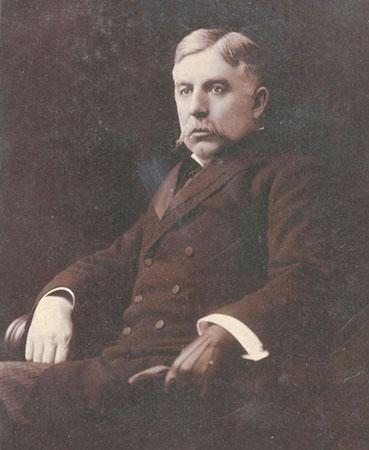
Prime Minister Patrick Morris
The Rooms Provincial Archives A23-134
A period of political instability followed. During the 1920s, some administrations lasted only days before shifting alliances brought them to an end. This rapid turnover of administrations made it difficult for politicians to work together to face the serious economic problems the colony was beginning to face.
By 1932, the Newfoundland Government was in serious financial difficulty. This was compounded by the Great Depression. The government found it necessary to bring in strict cost-cutting measures. Among these was the decision to cut war pensions — by as much as one-third in some cases. The public was incensed. This act, along with a series of other issues, spurred citizens to action. In April 1932, a demonstration against the government turned into a riot at the Colonial Building. By 1933, the colony was almost $100 million in debt. The government turned to Great Britain for help. Thus began a series of events that would lead Newfoundland and Labrador to confederate with Canada.
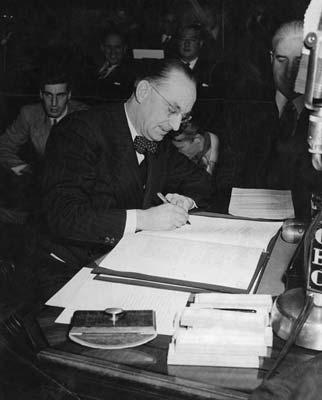
Joseph Smallwood signs the Terms of Union
Ottawa, 11 December 1948
The Rooms Provincial Archives B16-155
Although many factors influenced Newfoundland and Labrador's choice to join Canada, most historians agree that the colony's involvement in the First War World was a significant underlying factor. Historian Patrick O'Flaherty noted, "It is apparent ... how Newfoundland got itself into financial trouble. It was not mainly through post-1920 extravagances such as ... road building or ... town halls and bridges. Fighting England and France's war with Germany and paying related costs thereafter were crippling expenditures."